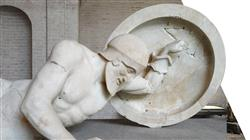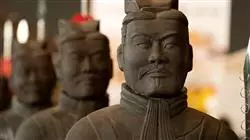University certificate
The world's largest school of business”
Why study at TECH?
This Executive Master's Degree will provide you with the knowledge you need to advance as cultural manager and revolutionize the industry”

Why Study at TECH?
TECH is the world's largest 100% online business school. It is an elite business school, with a model based on the highest academic standards. A world-class centre for intensive managerial skills training.
TECH is a university at the forefront of technology, and puts all its resources at the student's disposal to help them achieve entrepreneurial success"
At TECH Global University
|
|
Innovation |
The university offers an online learning model that combines the latest educational technology with the most rigorous teaching methods. A unique method with the highest international recognition that will provide students with the keys to develop in a rapidly-evolving world, where innovation must be every entrepreneur’s focus.
"Microsoft Europe Success Story", for integrating the innovative, interactive multi-video system.
|
|
The Highest Standards |
Admissions criteria at TECH are not economic. Students don't need to make a large investment to study at this university. However, in order to obtain a qualification from TECH, the student's intelligence and ability will be tested to their limits. The institution's academic standards are exceptionally high...
95% of TECH students successfully complete their studies.
|
|
Networking |
Professionals from countries all over the world attend TECH, allowing students to establish a large network of contacts that may prove useful to them in the future.
100,000+ executives trained each year, 200+ different nationalities.
|
|
Empowerment |
Students will grow hand in hand with the best companies and highly regarded and influential professionals. TECH has developed strategic partnerships and a valuable network of contacts with major economic players in 7 continents.
500+ collaborative agreements with leading companies.
|
|
Talent |
This program is a unique initiative to allow students to showcase their talent in the business world. An opportunity that will allow them to voice their concerns and share their business vision.
After completing this program, TECH helps students show the world their talent.
|
|
Multicultural Context |
While studying at TECH, students will enjoy a unique experience. Study in a multicultural context. In a program with a global vision, through which students can learn about the operating methods in different parts of the world, and gather the latest information that best adapts to their business idea.
TECH students represent more than 200 different nationalities.

|
|
Learn with the best |
In the classroom, TECH teaching staff discuss how they have achieved success in their companies, working in a real, lively, and dynamic context. Teachers who are fully committed to offering a quality specialization that will allow students to advance in their career and stand out in the business world.
Teachers representing 20 different nationalities.
TECH strives for excellence and, to this end, boasts a series of characteristics that make this university unique:
|
|
Analysis |
TECH explores the student’s critical side, their ability to question things, their problem-solving skills, as well as their interpersonal skills.
|
|
Academic Excellence |
TECH offers students the best online learning methodology. The university combines the Relearning method (a postgraduate learning methodology with the highest international rating) with the Case Study. A complex balance between tradition and state-of-the-art, within the context of the most demanding academic itinerary.
|
|
Economy of Scale |
TECH is the world’s largest online university. It currently boasts a portfolio of more than 10,000 university postgraduate programs. And in today's new economy, volume + technology = a ground-breaking price. This way, TECH ensures that studying is not as expensive for students as it would be at another university.
At TECH, you will have access to the most rigorous and up-to-date case studies in the academic community”
Syllabus
Throughout the 6 months of duration of this Postgraduate Diploma, the professionals will delve into the most exhaustive knowledge on Cultural Heritage Conservation and Exhibition . However, for this to be done in a much more natural and dynamic way, TECH uses the Relearning system, based on the reiteration of content. Thanks to it, you will be able to reduce the long hours of study and memorization, characteristic of other teaching methods.
A qualification with a theoretical-practical approach to Cultural Heritage Conservation and Exhibition that will lead you to lead large museum projects"
Syllabus
This university qualification has been developed by a teaching team specialized in the Cultural Heritage Conservation and Exhibition, in order to offer the professional the most recent information in this field. Thanks to the learning acquired throughout the 6 months of duration of this online program, the professionals will be able to make significant progress in the implementation of projects and actions whose main objective is to enhance the value of art, Cultural Heritage, as well as the general heritage history of places.
To do this, students have video summaries of each topic, videos in detail, complementary readings and case studies that can be easily accessed, at any time of the day, from a computer, tablet or cell phone with Internet connection.
Thus, the professionals will be able to deepen in the methodologies for the diagnosis of the state of conservation of cultural property, the criteria for intervention in restoration and conservation, museum management, sources of funding, communication or cultural tourism.
A university education, which will also enter in an attractive way in documentary systems, information management or education in the context of heritage and museums. A study plan that will allow you to effectively manage any action aimed at protecting heritage, giving it visibility and raising awareness among different population groups.
This Postgraduate diploma takes place over 6 months and is divided into 3 modules:
Module 1. Cultural Heritage Conservation
Module 2. Management of Museums, Art Galleries and Exhibitions
Module 3. Cultural Documentation: Cataloging and Research

Where, When and How is it Taught?
TECH offers the possibility of developing this Postgraduate diploma in Cultural Heritage Conservation and Exhibition completely online. Throughout the 6 months of the educational program, you will be able to access all the contents of this program at any time, allowing you to self-manage your study time.
Module 1. Cultural Heritage Conservation
1.1. Historic and Artistic Heritage Conservation and Restoration Theory
1.1.1. How is Heritage Preserved?
1.1.2. Who is Responsible for its Maintenance?
1.1.3. Steps to Follow for its Maintenance
1.1.4. Historical Evolution
1.1.5. Current Criteria
1.2. Museum Curator
1.2.1. Description of a Museum Curator
1.2.2. Steps to Follow to Become a Museum Curator
1.2.3. Deontology
1.2.4. Functions
1.3. Methodology for the Diagnosis of the State of Conservation of Cultural Assets
1.3.1. What are Assets of Cultural Interest?
1.3.2. Cultural Properties or Assets of Cultural Interest
1.3.3. Guide of Conservation of the Assets of Cultural Interest
1.3.4. Alteration and Agents of Deterioration
1.4. Methods of Analysis and Studyof Materials and Techniques
1.4.1. Definitions of the Method and Technique
1.4.2. Scientific Analysis
1.4.3. Techniques to Study the Historic-Artistic Heritage
1.4.4. Cleaning and Consolidation of Assets of Cultural Interest
1.5. Criteria for Intervention in Restoration and Conservation I
1.5.1. Definition of Criteria
1.5.2. Emergency Interventions
1.5.3. Plans to Protect Fine Arts Collections
1.5.4. Plans to Protect Ethnographies
1.6. Criteria for Intervention in Restoration and Conservation II
1.6.1. Plans to Protect Archaeological Remains
1.6.2. Plans to Protect Scientific Collections
1.6.3. Plans to Protect Other Intangible Cultural Heritage Elements
1.6.4. Importance of Restoration
1.7. Problems for Conservation of Assets of Cultural Interest
1.7.1. What does Conservation Involve?
1.7.2. Conservation Problems
1.7.3. Criteria to Carry out a Cultural Heritage Restoration.
1.7.4. Rehabilitation of Assets of Cultural Interest
1.8. Preventive Conservation of the Cultural Heritage
1.8.1. Concept
1.8.1.1. What is Preventive Conservation?
1.8.1.2. BORRAR
1.8.2. Methods
1.8.3. Techniques
1.8.4. Who is Responsible for the Conservation?
1.9. Study of the Context of Cultural Property and Heritage Collections I
1.9.1. What is the Valuation of Cultural Assets?
1.9.2. Materials Used in the Conservation of Tangible Assets and Heritage Collections.
1.9.3. Storage
1.9.4. Exhibition
1.10. Study of the Context of Cultural Assets and Heritage Collections II
1.10.1. What is Involved and Who is in Charge of Packaging?
1.10.2. Packaging of Cultural Property and Heritage Collections and Heritage Collections
1.10.3. Transport of Cultural Property and Heritage Collections
1.10.4. Manipulation of Cultural Property and Heritage Collections and Heritage Collections
Module 2. Management of Museums, Art Galleries and Exhibitions
2.1. Museums and Art Galleries
2.1.1. The Evolution of the Concept of Museum
2.1.2. History of Museums
2.1.3. Content-Based Typology
2.1.4. Contents
2.2. Organization of Museums
2.2.1. What is the Function of an Museum?
2.2.2. The Core of the Museum: the Collections
2.2.3. The Invisible Museum: The Storerooms
2.2.4. The DOMUS Software: Integrated SystemDocumentation and Museum Management System
2.3. Dissemination and Communication of the Museum
2.3.1. Exhibition Planning
2.3.2. Forms and Types of Exhibitions
2.3.3. Dissemination and Communication Areas
2.3.4. Museums and Cultural Tourism
2.3.5. Corporate Image
2.4. Management of Museums
2.4.1. Department of Management and Administration
2.4.2. Sources of Financing, Public and Private
2.4.3. Associations of Friends of Museums
2.4.4. The Store
2.5. Role of the Museum in the Information Society
2.5.1. Differences between Museology and Museography
2.5.2. Role of the Museum in Today’s Society
2.5.3. Information and Communication Technologies at the Service of the Museum
2.5.4. Applications for Mobile Devices
2.6. The Art Market and the Collectors
2.6.1. What is the Art Market?
2.6.2. The Art Trade
2.6.2.1. Circuits
2.6.2.2. Markets
2.6.2.3. Internationalisation.
2.6.3. The Most Important Art Fairsin the World
2.6.3.1. Structure
2.6.3.2. Organization
2.6.4. Trends in International Collecting
2.7. Art Galleries
2.7.1. How to plan an Art Gallery
2.7.2. Functions and Constitution of Art Galleries
2.7.3. Towards a New Typology of Galleries
2.7.4. How Galleries are Managed?
2.7.4.1. Artists
2.7.4.2. Marketing
2.7.4.3. Markets
2.7.5. Difference among Museums, Exhibition Halls and Art Galleries
2.8. Artists and their Exhibitions
2.8.1. Recognition of the Artist
2.8.2. The Artist and his/her Work
2.8.3. Copyright and Intellectual Property
2.8.4. Awards and Opportunities
2.8.4.1. Contests
2.8.4.2. Scholarships
2.8.4.3. Awards
2.8.5. Specialized Journals
2.8.5.1. Art Critic
2.8.5.2. Cultural Journalism
2.9. The Motives of Culture
2.9.1. What Culture Represents
2.9.2. What Culture Offers
2.9.3. What Culture Needs
2.9.4. Promote Culture
2.10. Basis for Didactic Museography in Art Museums
2.10.1. Art Exhibitions and Museums: The Differential Fact
2.10.2. Some Evidence and Opinions on All This: From Boadella to Gombrich
2.10.3. Art as a Convention Set
2.10.4. Art Inscribed in Very Specific Cultural Traditions
2.10.5. The Art in the Museums and in the Spaces of Heritage Presentation
2.10.6. Art and Didactics
2.10.7. The Interactivity as Didactic Resource in the Art Museums
Module 3. Cultural Documentation: Cataloging and Research
3.1. Documentation of a Museum
3.1.1. What Is the Documentation of a Museum?
3.1.2. What is the Purpose of an Museum?
3.1.3. Museums as a Collection Center of Documentation
3.1.4. Documentation Related to Museum Objects
3.2. Information Management and its Practical Application
3.2.1. Description of the Information Management
3.2.2. Information Management Origins and Development
3.2.2.1. 20th Century
3.2.2.2. Currently
3.2.3. Tools for Management Information
3.2.4. Who Can be in Charge of the Information Management??
3.3. Documentary System I
3.3.1. Archive Documentary Content
3.3.1.1. Archive in Document Management
3.3.1.2. Importance of the Documentary Archives
3.3.2. Duties of the Personnel in Charge of the Documentary Archive
3.3.3. Documentary Instruments
3.3.3.1. Records
3.3.3.2. Inventory
3.3.3.3. Catalog
3.4. Documentary System II
3.4.1. Documentation
3.4.1.1. Graph
3.4.1.2. Technique
3.4.1.3. Restoration
3.4.2. Documentary Movements and Funds
3.4.3. Administrative Documentation and Filing
3.5. Documentary Standardization
3.5.1. Terminological Control Tools
3.5.1.1. Hierarchical Lists
3.5.1.2. Dictionaries
3.5.1.3. Thesauri
3.5.2. Quality Standards
3.5.3. ICT Applications
3.6. Museum Investigation
3.6.1. Theoretical Framework
3.6.2. Documentation vs. Investigation
3.6.3. Information Management Processes
3.7. Dissemination Platformsof Collections and Projects
3.7.1. Transmission of Knowledge
3.7.2. Social media
3.7.3. Media
3.8. Education in the Contextof Heritage and Museums
3.8.1. Didactics of Museums
3.8.2. Role of the Museums and Galleries in Education
3.8.3. Theoretical Framework of Learning
3.8.3.1. Formal
3.8.3.2. No formal
3.8.3.3. Informal
3.9. Mediation and Participatory Experiences
3.9.1. Education for Equality and Integrity
3.9.2. Proposals of Awareness and Respect for the Environment
3.9.3. Sociomuseology
3.10. Divisions of Education and Cultural Action
3.10.1. History
3.10.2. Structure
3.10.3. Functions

A university program that will allow you to create proposals to raise awareness of heritage conservation among young audiences"
Postgraduate Diploma in Cultural Heritage Conservation and Exhibition
The conservation and exhibition of cultural heritage is a fundamental task to preserve the history and culture of a country and its people. That is why TECH has developed an academic program of Postgraduate Diploma in Cultural Heritage Conservation and Exhibition, with the aim of training professionals capable of leading projects for the protection and exhibition of heritage. This program, available in 100% online mode, offers a complete and updated preparation in conservation methodologies and management of museums and galleries, as well as in the use of ICT in cataloging and documentary conservation. Students will have access to multimedia resources that will allow them to deepen their knowledge of the topics studied, from any device with an internet connection.
Specialize in cultural management
The Postgraduate Diploma in Cultural Heritage Conservation and Exhibition focuses on training professionals capable of leading projects that meet the objectives of preservation and exhibition of cultural heritage, generating a positive impact on society. This implies knowing the latest conservation techniques and methodologies, the efficient management of resources and the use of the most advanced technologies. Specialization in this program will enable students to acquire advanced knowledge in conservation, management and exhibition of cultural heritage, which will allow them to access jobs in museums, galleries and other cultural institutions. In addition, they will be able to participate in research and development projects in the field of conservation and exhibition of cultural heritage. In summary, TECH's Postgraduate Diploma in Cultural Heritage Conservation and Exhibition is a complete and updated learning that trains professionals to lead projects for the protection and exhibition of cultural heritage, generating a positive impact on society and enriching the cultural and historical knowledge of a community.

















